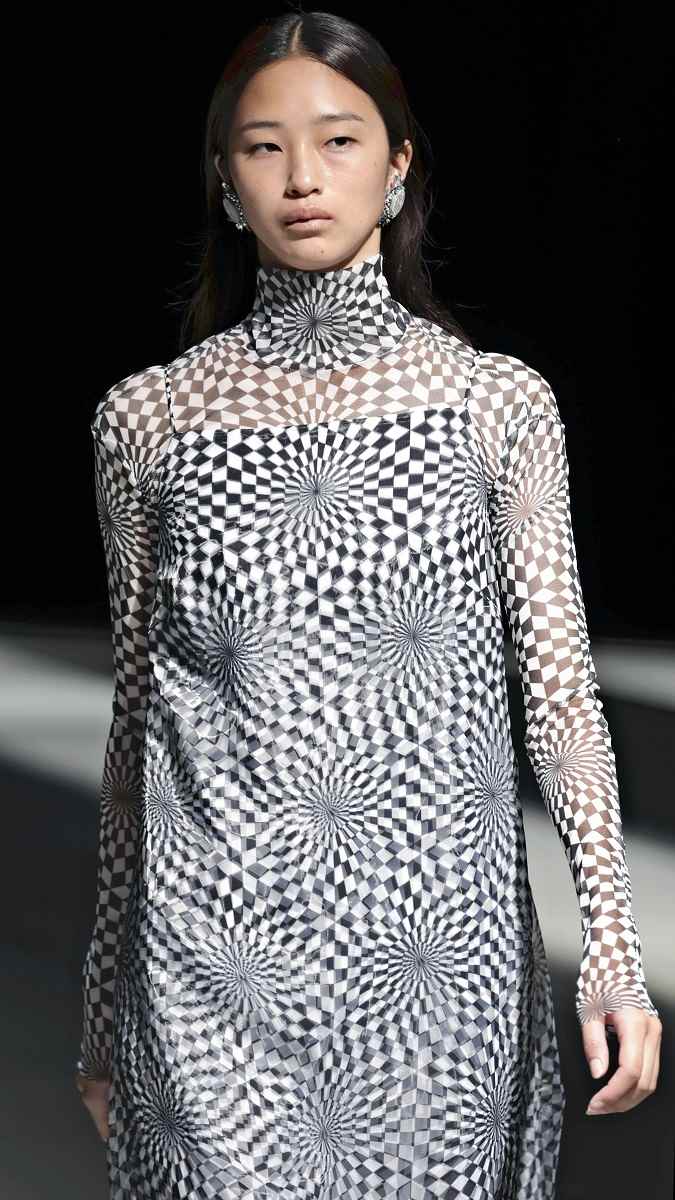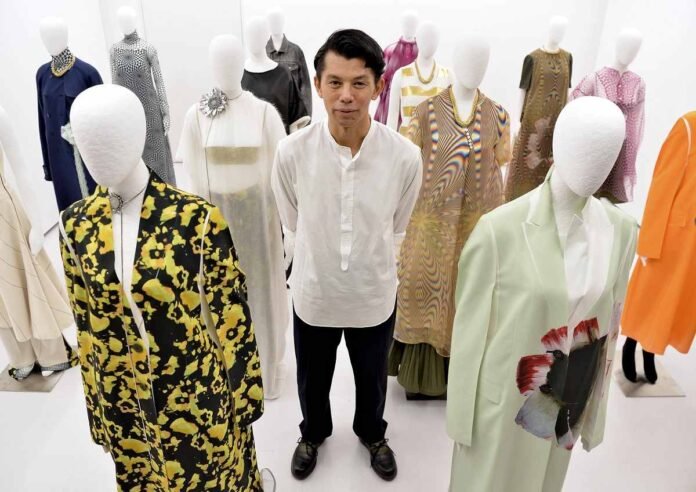Telma founder Terumasa Nakajima
12:15 JST, November 15, 2024
In September this year, Tokyo Fashion Week Spring/Summer 2025 opened with the debut of the latest styles from Japanese brand Telma. Terumasa Nakajima founded the brand in 2022.
Nakajima is an experienced designer who has been working for high-end brands such as Dries Van Noten in Belgium for more than 10 years.
At Telma’s first runway show, Nakajima showcased elegant garments, mostly made from fabric he created using various companies’ advanced Japanese craftsmanship techniques.

A white cape coat made from Japanese washi paper is on display during Tokyo Fashion Week on September 2.
A model, wearing a long white cape coat, kicked off the catwalk show. According to the designer, the jacket is made of 100% lightweight Japanese washi paper.
The highly absorbent washi is made in Bishu, a region stretching from the Owari area of Aichi Prefecture to the Seino area of Gifu Prefecture. Bishu is one of the most important textile production areas in the country.
A gold dress gracefully peeked out from the slit of the jacket as the model walked down the catwalk.
The show also included a dress made from two layers of sheer fabric that created a pattern like an optical illusion, as well as a top made from cotton jersey treated to resemble sheepskin.

A dress made of two transparent layers of fabric

A top made from cotton jersey that has been treated to resemble sheepskin
“I want to make clothes that are personal and radiate the warmth of craftsmanship,” says Nakajima. The catwalk was filled with clothes that seemed to be a direct expression of those words.
Nakajima graduated from the renowned Royal Academy of Fine Arts Antwerp in Belgium in 2010 and joined Dries Van Noten in the city as the designer’s assistant. He oversaw the design of women’s clothing.
Van Noten, the founder of Dries Van Noten, always sought ‘neutrality’, according to Nakajima. Van Noten was “dedicated to designing and styling clothes that harmonize with the people who wear them,” believing that “it is wrong to push bold designs and also not make a statement,” Nakajima said.
It looked like Western clothing was made by cutting up fabric to create three-dimensional pieces like armor, Nakajima said. The turning point came when he saw the clothes of world-famous designer Issey Miyake.

The finale of Telma’s catwalk show
Nakajima was amazed by the “techniques that create beautiful silhouettes by pleating a single piece of fabric” and joined the Japanese brand in 2014. He was involved in the garment making process and worked with local companies with advanced expertise in weaving, dyeing and other skills.
Since Telma’s launch, 60% to 70% of Nakajima’s designs have been made from fabrics he created himself. “Only in Japan can fabrics for one fashion style be made consistently, ranging from synthetic to natural fibers,” says Nakajima, who remains committed to pursuing new materials.
Nakajima believes that although clothes made with Japanese techniques are not suitable for mass production, they can still make their presence felt in the world. He aims to create a “global niche brand” armed with the garments.
“I want to make clothes that capture people’s emotions and make them instinctively feel great, rather than logically made clothes,” says Nakajima, who will continue to convey the joy of dressing up.



